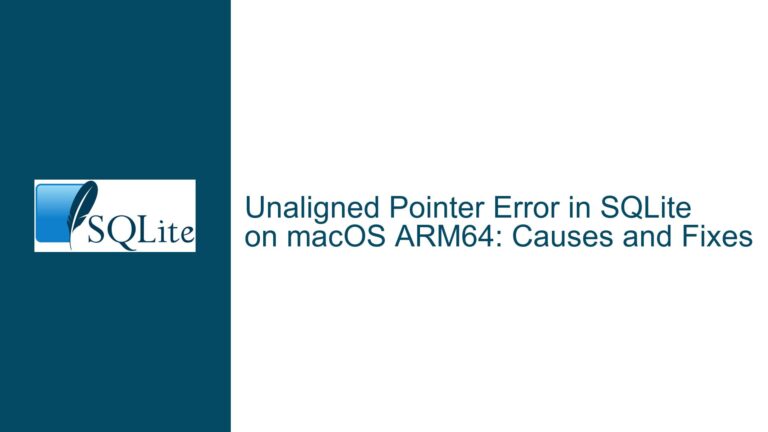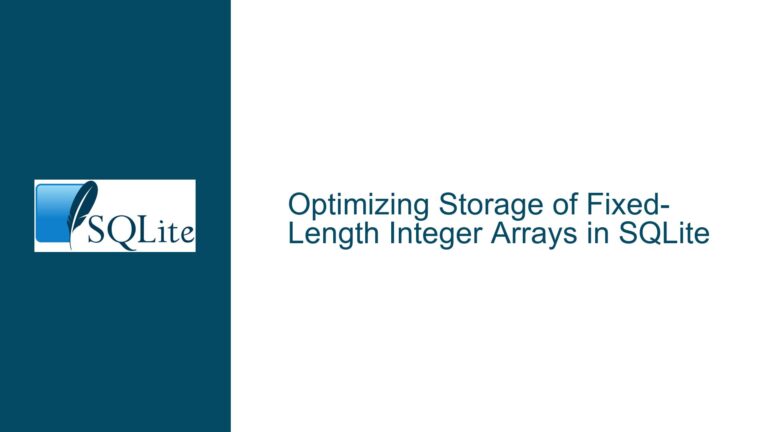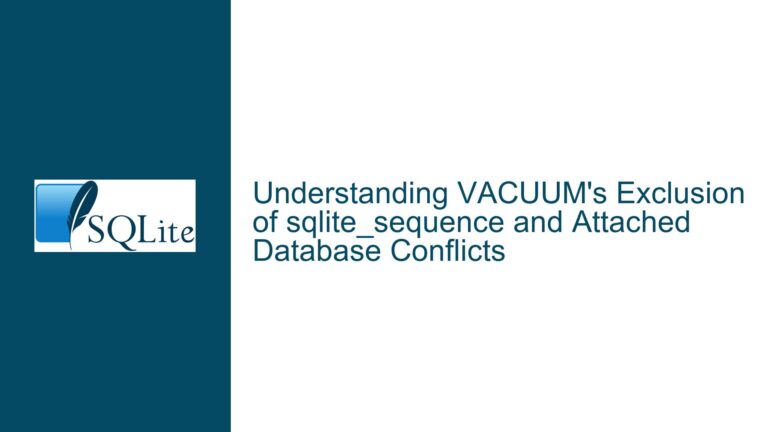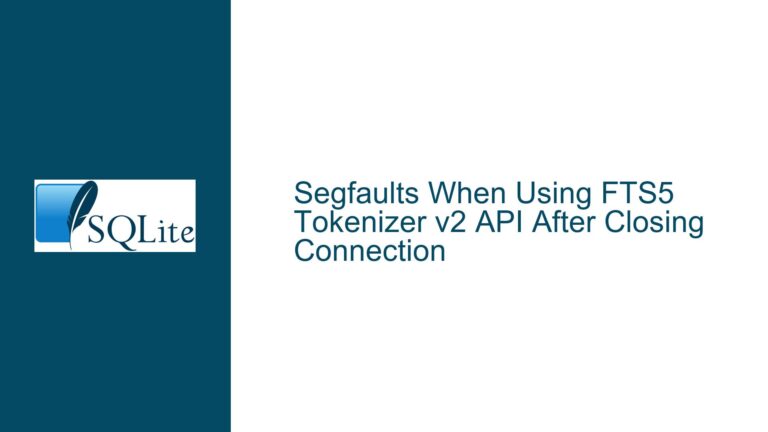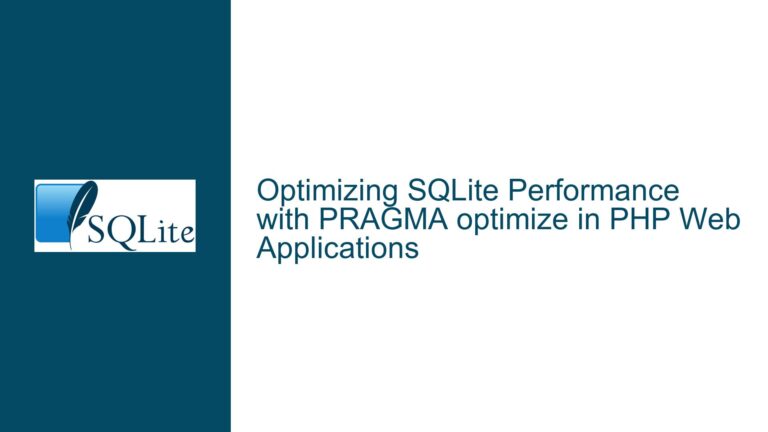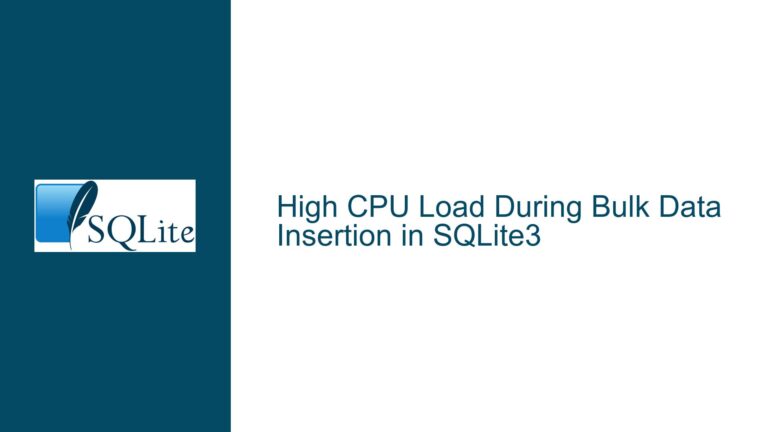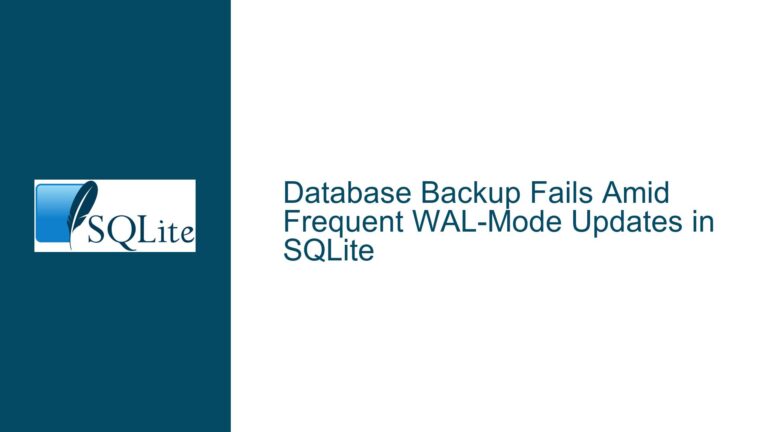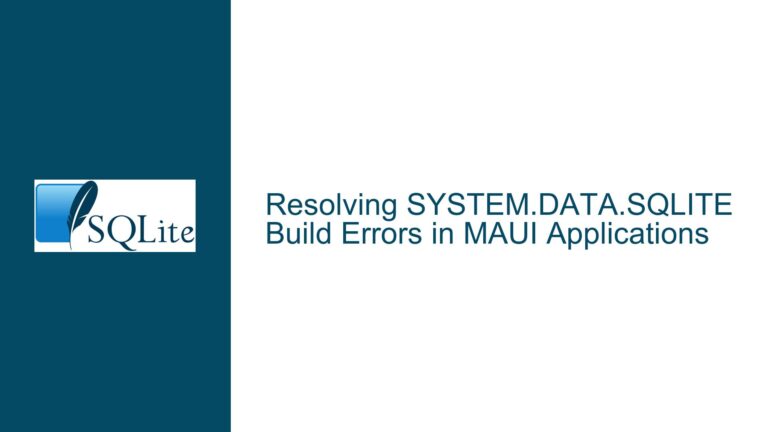Efficiently Persisting SQLite In-Memory Databases to Disk with Minimal Overhead
Strategies for Transferring In-Memory Database Contents to Persistent Storage The challenge of persisting data from an SQLite in-memory database to disk revolves around three critical constraints: Preservation of transactional consistency during transfer Minimization of CPU cycles consumed by serialization/deserialization Reduction of I/O operations to prevent storage subsystem bottlenecks SQLite’s architecture provides multiple pathways for achieving…

